An Afropean in Marrakech
Marrakech is a multicultural city with African, Arab, Berber and French influences and could almost be described as an Afropean Mecca, where Africa meets Europe without losing its identity. Johny Pitts searched the souks for some Afropean culture, and found everything from Arabic Neo Soul to North African street photography and Moroccan pop-art. (Oh, and the best value-for-money accommodation in the entire Medina!)
All Words & Photographs © J Pitts 2014
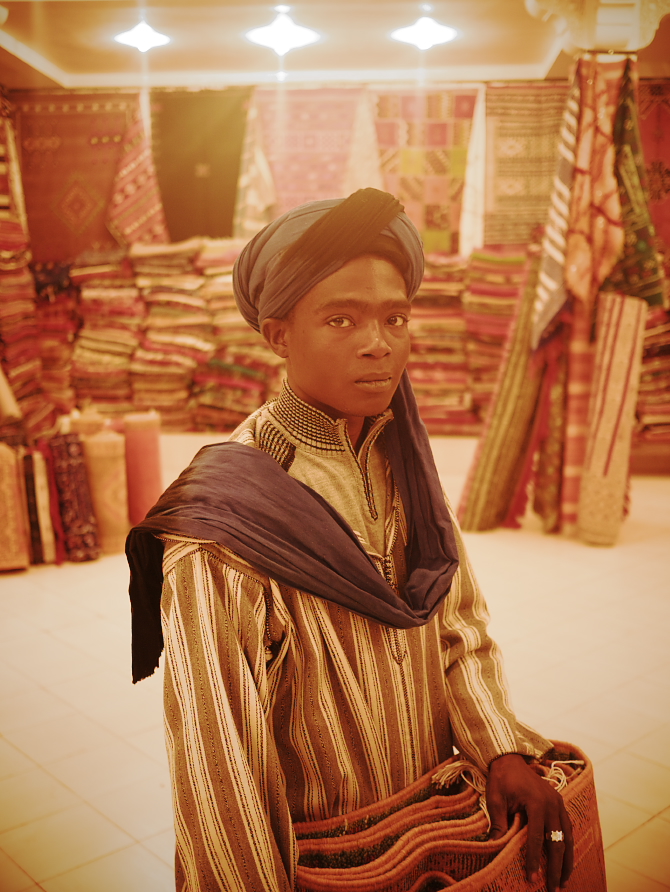
The legendary 14th century Moroccan traveller Ibn Batutta once wrote: “Travelling gives you a home in a thousand strange places, then leaves you a stranger in your own land”. I thought about this as I eagerly waited to check out of the disorderly Marrakech Menara airport and get on with my own travels.
A popular saying in Morocco is ‘Anything is possible, nothing is guaranteed’, and in that way Marrakech seems to have embraced change whilst preserving its soul
You see, a strange thing happens every time my feet touch the red terrain of this North African city. It isn’t the explosion of the senses that Marrakech detonates; the sweet and sickly smelling potion of fragranced oils, spices, trash, meat, leather and petrol. It isn’t the vivid colours of crumbling Kasbahs covered in indigo silks and sun-bleached saffron-died rugs, or the shards of sunlight breaking through dusty souks turned into dirt-clouds by Kamikaze mopeds. Nor is it the sound of cobra-charming flutes or playful haggling in the famous square Jemaa el Fna, or the monotone though mystical call to prayer reverberating through the old medina. It is this: that I am no longer part of a racial minority. I feel at home in the strangeness of Marrakech, in a way that the UK, my real home, can’t accommodate.
travelling gives you a home in a thousand strange places, then leaves you a stranger in your own land
Like me, you see, Marrakech is a mongrel: an intoxicating, bedraggled, feral city that has seen tribal warfare, religious uprisings, corrupt princes, French colonisation and, more recently, an invasion of that most terrible clan of all; tourists. And yet, the city has a culture that is coherent, good-natured, and at ease with itself. A popular saying in Morocco is “Anything is possible, nothing is guaranteed”, and in that way Marrakech seems to have embraced change whilst preserving its soul.
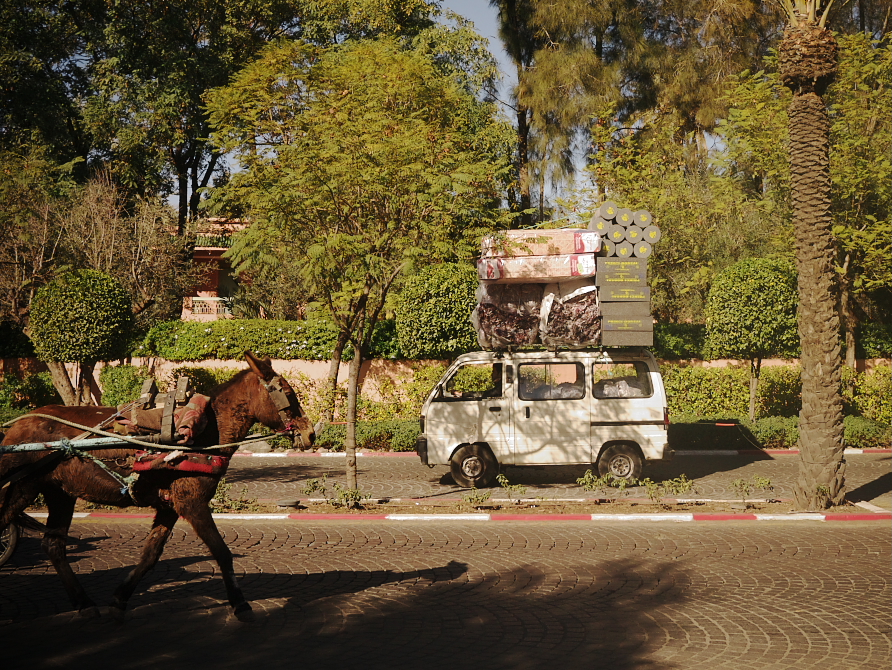
Marrakechis reflect the hybridity of their city’s history. Whilst the Berbers, who came from the surrounding Atlas Mountains to settle first, make up the largest slice of the population, migrants from South and West Africa, Arabs and wealthy westerners have weaved themselves indelibly into the social fabric of the city, and because of the age-old Sahara trading route, the Berbers themselves are made up of many multicultural nomadic tribes from as far flung as Mali.
And so there I was, happy fitting in with the funky old medina, making like a Moroccan…
Buying & Haggling
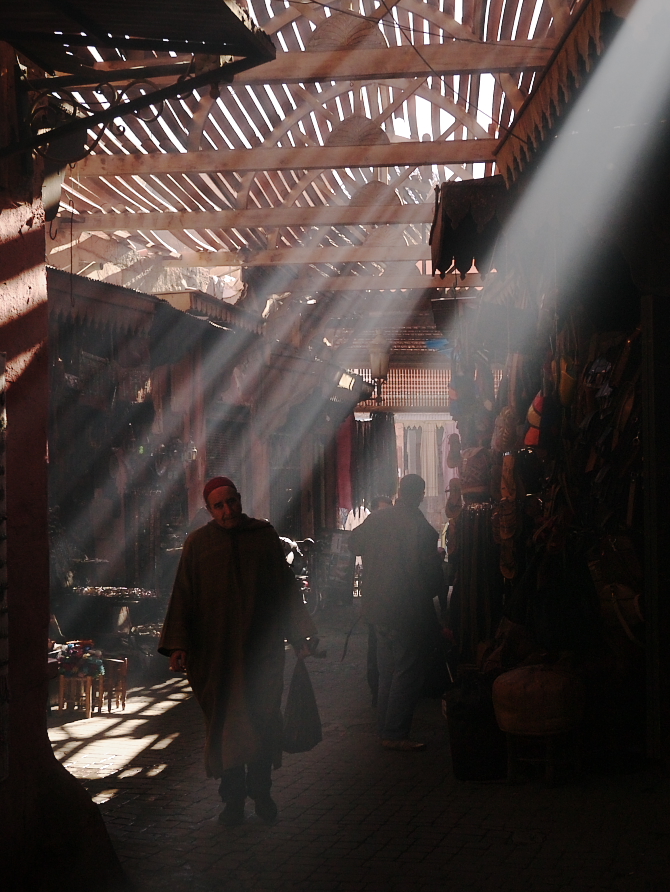
I have been to Marrakech twice; once, with my girlfriend, and another time, with my mother, both white women, and I got to see two sides of the city. Being mixed race, when I was alone I wandered the souks freely, strolling leisurely through the chaos and blending in with the brown faces. Nobody assumed anything, apart from, it seems, that I was Moroccan. However when I’m seen with anybody who is white I suddenly get ‘otherised’ too. “Bob Marley!” they shout or ‘Jimi Hendrix!”. Most of all though, I know they ultimately see me as the Fresh Prince did Ashley when he realised he could make money from her singing abilities: a walking, talking currency symbol.
you are welcomed into a candle lit courtyard made of marble, curtain draped lounge areas, a plunge pool and a roof terrace to end your days watching the sun set on satellite-clad roof tops, with the imposing Atlas mountains filling half the sky in the distance.
So if you could in any way pass for Berber, one of the first things I recommend investing in is a beautiful piece of Moroccan clothing – a shirt or a scarf. That way you can play it like you’re a local right from the start, and wander around without being hassled. Head for the Dyers District, just off Ben Youssef Medersa, and look out for hand-made pieces with silks and cottons, and hand-dyed with natural colouring (it is sometimes worth buying a piece – expect to pay between £6 and £10 for a silk scarf – just to get a look at the fascinating old school fire-dying process).
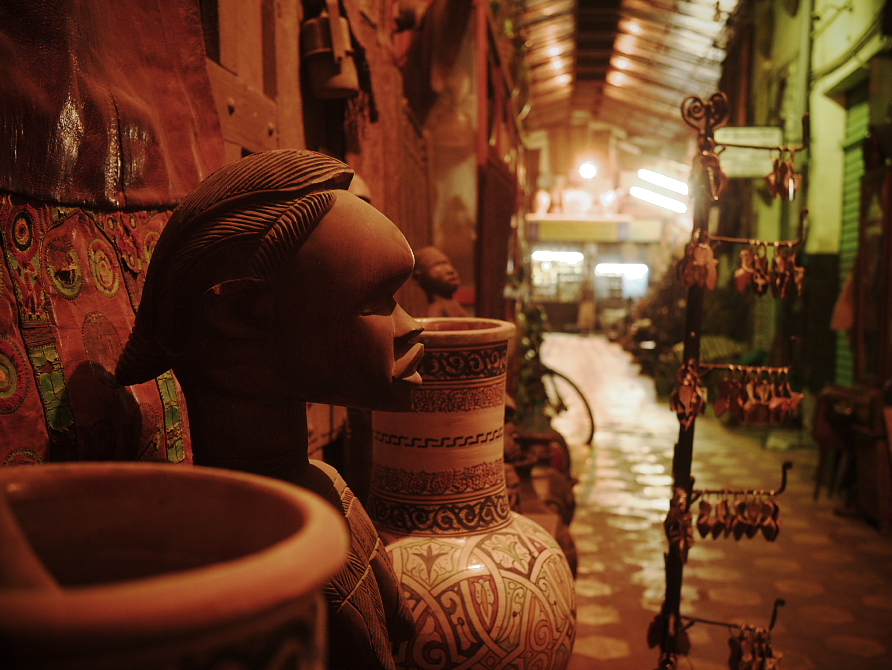
Something to look out for here are the young men asking if you need directions. A few things you should know…
- Only accept if you’re willing to part with some dirhams (in the form of a tip).
- They will often take you to a stall run by a family member, which doesn’t always equate to getting the best price.
- Don’t be overly cynical about going along. You can always haggle for what you want, and it can be an adventure getting an unofficial guided tour of Marrakech, as long as you’re with someone.
“walking through the various souks and into Place Jemaa el fna makes you feel like you’re an extra in an Indiana Jones movie”
Other things to look out for are Argan oil (specific to North Africa and great to cook, moisturise skin or condition hair with), hand-woven rugs that often depict travel narratives hidden in their graphics, and semi-precious stones. I would recommend buying all of these three items in the surrounding Atlas Mountains. You can hire a private driver and a car (around £110-£130 for two people, but well worth it) for a day trip out to mystical Ouarzazate, the door of the Sahara desert, and you will stop at various stalls in scenic spots along the way. The prices may be more than in the medina, but are often more likely to be unique and genuine.
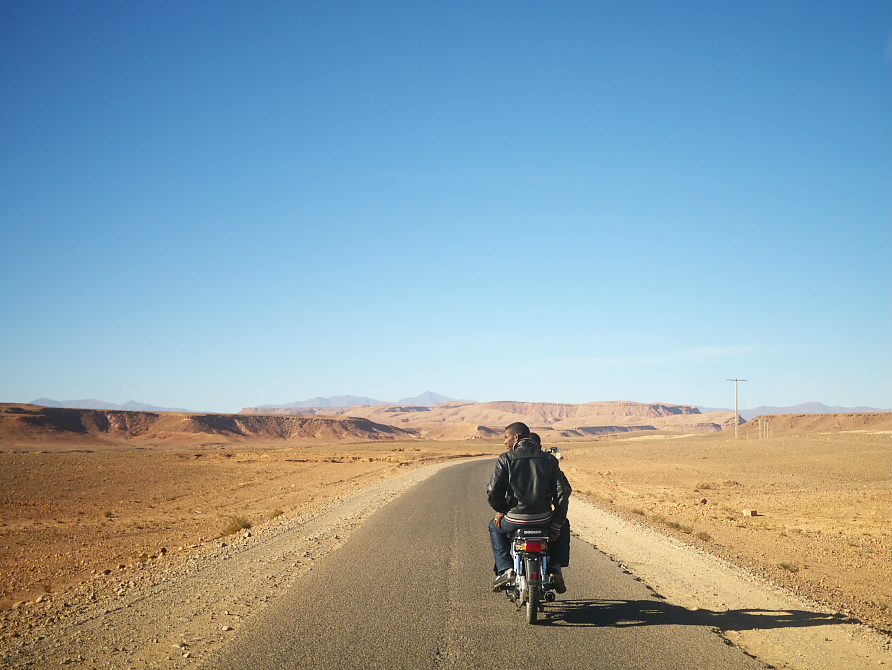
You have to get into the spirit of banter, too. Don’t ever be offended by pushy hagglers, just stay playful and you will see that Marrakech’s bark is worse than its bite, and the shouting and sometimes even arm-pulling is all done in a light-hearted manner. After all, being Moroccan, they know that nothing is guaranteed, anything is possible!
Where to Stay

Unless you’re one of the lucky few holidaying at Hotel Mamounia, which may well be the best hotel in the world (and has frequently been awarded this title by various travel companies), there is only one way to do Marrakech, and that is to stay in a Riad within the walls of the old town. If you’re anything like me, during the first five minutes of entering the medina you’ll wish you had stayed in a generic hotel in the European quarter Gueliz, with its boring but neat boulevards and McDonalds, because there is no doubt that on first impressions old Marrakech is a daunting prospect, with shadowy backstreets and sinister looking men hanging out on street corners. Even though I’d been before and knew that Riads were the way to go, I was full of fearful apprehension following my taxi driver on foot through a maze of crumbling red alleyways to a door in a wall of mud.
Things are changing in Marrakech and the younger crowd are a little more open minded when it comes new ideas about what it means to be Moroccan, which now includes travel, pop music and the arts
When the door to a good Riad is opened, though, your worries will immediately be alleviated, as you are beckoned into a candle-lit courtyard made of marble, curtain-draped lounge areas, perhaps a plunge pool, and a roof terrace to end your days watching the sun set on satellite-clad roof tops, with the imposing Atlas mountains filling half the sky in the distance.
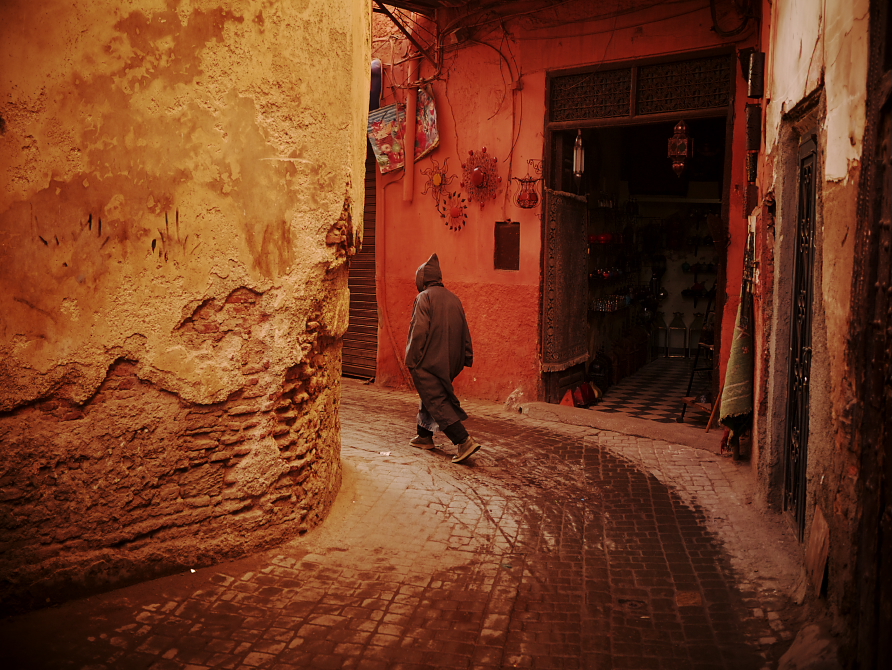
The style of a Riad is paradoxical; the decor is basic yet palatial, with intricately-carved wooden doors, ornate tiles and sometimes even marble staircases, creating a chic, minimal living space that seems all things at once; elegantly humble, luxuriously laidback.
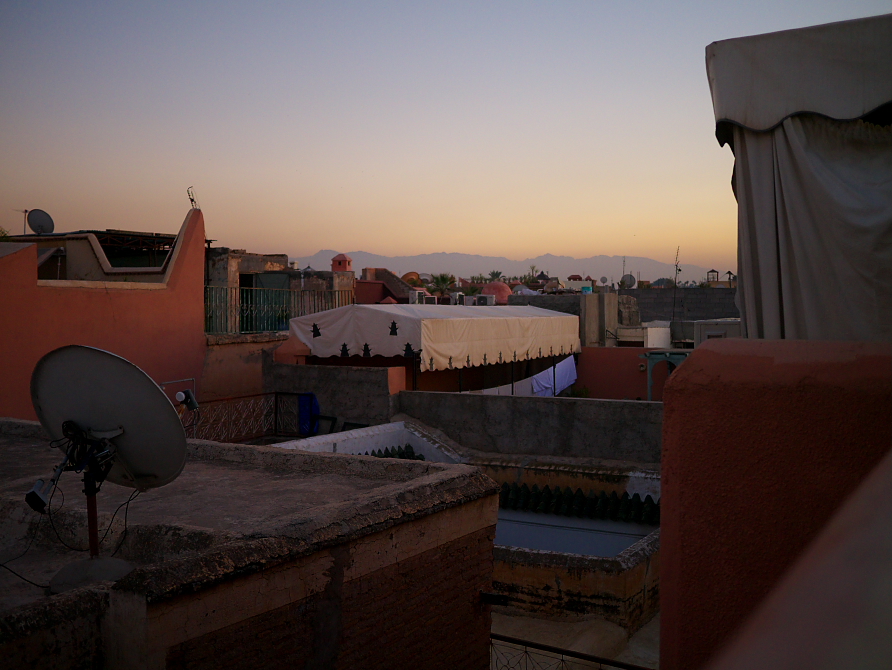
Norwegian owned Riad P’tit Habibi is beautiful, if a little off the beaten track, and has the advantage of being run by a very welcoming host, Abdeloufi, who is from Marrakech and full of great advice and contacts. Fatima is in charge of food and will provide the best meals you’re likely to have all holiday. This time I stayed at the VERY reasonably priced Riad Dar Titrit, perfectly placed for the souks and only a ten minute stroll to the famous Jemaa el Fna square. My hosts Fabien and Annie were lovely and accommodating, though my French was only slightly worse than their English, which made trying to get information about booking tours and so on quite interesting!
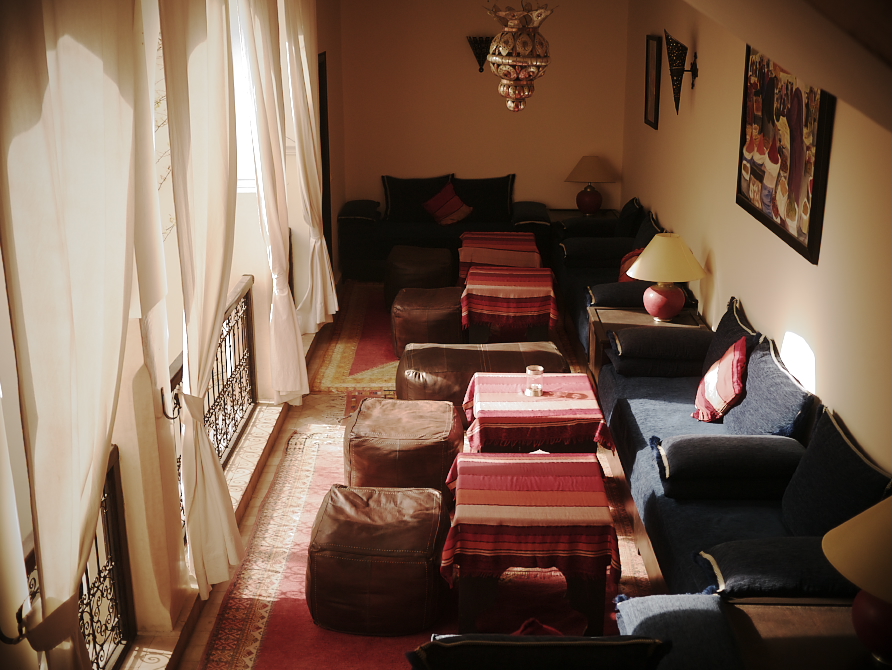
The advice you’ll thank me the most for though, is booking at the best value for money Riad in the whole of Marrakech. I’ll tell you more about this in the next section, as well as shedding some light on more of Marrakech’s best-kept secrets.
Things to Do
When you’ve got the usual sights out of your system (and it really can take a while, because just walking through the various souks and into Jemaa el Fna makes you feel like you’re an extra in an Indiana Jones movie), it is time to hit some of the hip Afropean spots.
I hooked up with Kamal Laftimi at a bar and restaurant he owns called Le Jardin, the perfect place to unwind after a hard day’s treasure hunting. “When I bought this place it was a family home, with these beautiful trees in the courtyard. They wanted to sell so I decided to turn the space into a bar that was themed around the trees,” Kamal told me, and sure enough everything was a shade of green; from the tiles to the glasses and the roof terrace. The atmosphere was cool and laidback, which is certainly more than can be said for the pretentious and unusually standoffish (for Marrakesh) Cafe Arabe just around the corner.

The soundtrack, provided by a Majorcan DJ-mate of Kamal’s, helped to create what I thought of as a very Afropean vibe. A soulful Arabic sounding French Hip-Hop track called ‘De Terres d’Afrique’ by Kery James (I shazzamed it) was followed by Erykah Badu’s ‘Apple Tree’, then some mellow downtempo Morrocan music by Al Maghrib 3 called ‘Bel Otobees’.
The most interesting artist I heard on Le Jardin FM was a smooth Arabic Neo Soul singer by the name of Ahmed Soultan, who describes his music as ‘Afrobian Soul’ or ‘Afro-Arabic Soul’. The music is a hypnotic blend of Byzantine-scales and rhythmic chants, with reggae riffs and soulful harmonies sung in French, English and Arabic.
https://www.youtube.com/watch?v=HcPVNoZ5eQU
Perhaps the main flag-waver of the ArabicNayda urban music scene that seems to be giving Neo Soul a renaissance in the Middle East,Soultan was born in southern Morocco, moved to France at an early age and then returned to Morocco in 1996 where he crafted his skills as a musician. He fell in love with surfing in his teenage years (by the way Essaouira, which is only a couple of hours away from Marrakech by bus, has GREAT surfing!) and learned guitar the Jack Johnson way: by sunset on the beach after catching some waves. Jack Johnson certainly isn’t a musical comparison though, and it is hard to compare Soultan’s sound with anyone, though he counts everybody from Femi Kuti to George Clinton and The RZA as influences, all of whom he managed to collaborate with for his new album, due for release this spring.
More info: http://www.ahmedsoultan.com/
https://www.youtube.com/watch?v=HcPVNoZ5eQU
With the mellow ‘Afrobian’ soul playing in the background, I noticed that Kamal looked surprisingly young to own a chain of successful restaurants and bars, and yet was the perfect spokesman for Le Jardin, an establishment that had become a hip hangout area for the city’s emerging arts scene. He wore a knitted beanie pushed half way off of his forehead, a casual blue shirt with elegant tortoiseshell rounded wayfarers and slacks in a muted green colour that matched the décor of his establishment. He seemed to represent the new cosmopolitan identity of the city’s younger generation. “Things are changing in Marrakech…” he told me whilst pouring a mint tea, “…and I think the younger crowd are a little more cosmopolitan and open-minded when it comes to new ideas about what it means to be Moroccan, which now includes travel, pop music and the arts”.
It is true that as a Westerner, after after a while you try to zone out of the haggling, but it had made these foreigners rude and dismissive to everyone with brown skin they met, including the man they didn’t know was the millionaire owner of the establishment they had just walked into
Along with his wife Laila, Kamal helps to facilitate artists at a private Riad next to Le Jardin called Riad 18, and he ran me through some of the bright lights of Moroccan art I should look out for, like Artsi Ifrach, a Moroccan/Israeli fashion designer who uses African fabrics in his work. He also mentioned an exciting young photographer from Tangier, Hicham Gardaf, whose beautiful Tangier Diaries (2012) seemed to get beneath the skin of a country that, as a group of Magnum photographers recently found out, is famously wary of foreigners taking pictures.

Kamal was also on speaking terms with the legendary Iranian photographer Abbas Attar, who was responsible for a legendary photo essay for Magnum, partly taken in Morocco entitled Allah O Akbar, a journey through militant Islam, and was in town to support plans for what will be the biggest museum of photography in the world, to be built in Marrakech by 2016.
Out of all the artists we talked about though, Kamal seemed most keen to show me the work of his friend, Hassan Hajjaj, a groundbreaking pop-artist who, along with Richard Branson’s sister Vanessa, seems to have been at the forefront of turning Marrakech into a Mecca for modern art.
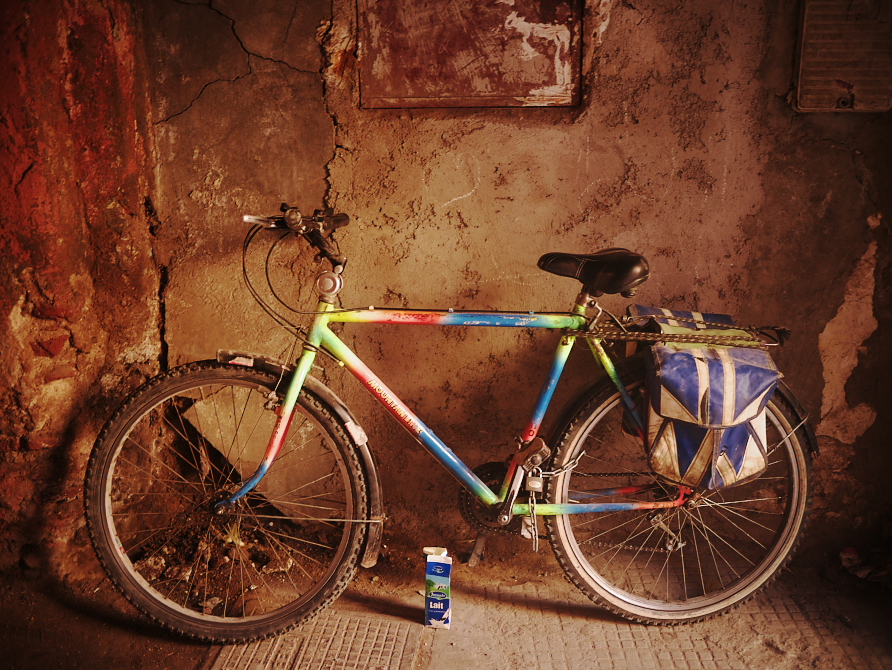
As he led me out the backdoor of chic, modern Le Jardin, and into a series of ancient labyrinthine backstreets, it was clear Kamal was juggling two worlds. He grew up in the medina, and knew most of the old market sellers by first name, sharing ‘Salaam Alaikums‘ with people he’d known his whole life. Yet this was a man who was now heading out on business trips to Brazil and getting his international DJ friends to make him mixtapes.
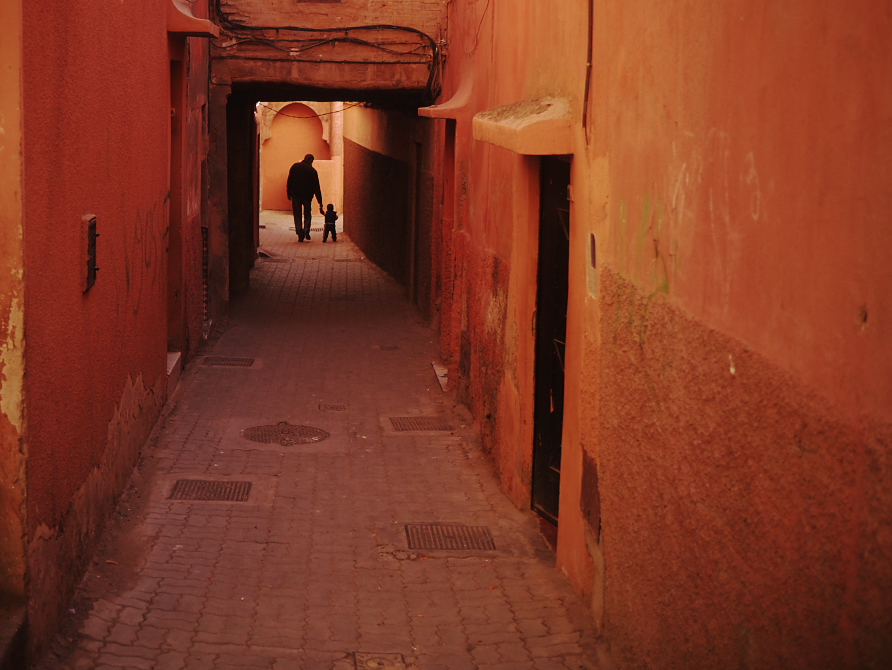
Five minutes and perhaps fifty side streets later we were at Riad Yima, the tucked away home-cum-art gallery of pop artist Hassan Hajjaj. The artist was away working at his second home in London, but Kamal showed me around the colourful and deeply ironic works. There were traditional Moroccan dresses covered in gaudy brands like Versace and Fendi, and it was nice to see social commentary in artwork that also looked Islamic.

We ended the day back at Le Jardin, and after an avocado milkshake (you can get these all over Marrakech and they are delicious!) Kamal showed me out and asked me to meet him later for dinner with one of his best friends. As we were saying our goodbyes I noticed him welcome in westerners from all over the place; American couples, German families, British groups of friends, and they all brushed him off as if he were trying to pester them for cash. It is true that as a westerner, after a while you try to zone out of the haggling, but it had made these foreigners rude and dismissive to everyone with brown skin they met, including the man they didn’t know was the millionaire owner of the establishment they had just walked into. I remember thinking, “no matter what, it is so important to stay friendly and charming in a city that, ultimately, is only being those things to you”.
Outside the Medina

Not everything worth seeing in Marrakech is in the old town, and on my way to visit the famous Art Deco home of Yves Saint Laurent, in the European quarter Guerliz, I stumbled on an area of town I’m going to call ‘Little Africa’. Located just off Avenue Mohammad 5, on Rue Oum Errabia, you get that sure sign you’re in a cool little cultural hub straight away by the neat and colourful Hip-Hop style graffiti pieces on the walls.

Then, across the road from the graffiti is a building that looks like a Caribbean beach shack called ‘Mama Afrika’. Here stylish Marrakechis catch up with work on their Macs or chill out with friends whilst mellow reggae rhythms lilt in the background and the National Geographic channel plays from a small TV. It is interesting how, at times, the predominant black Afro identity across the globe is African American or Afro-Caribbean, and how Africans actually based in the motherland assume black identities that are diasporic. Thus Mama Afrika was really Mama Jamaica; the staff all looked bohemian with dreads and Rastafarian knitted hats, and the menu was full of things like ‘reggae juice’ and ‘rasta chicken’. I ordered the Island Panini, which was delicious and very reasonably priced. Mama Afrika is a great alternative spot to chill in outside the medina.
A couple of buildings away on Oum Arrabia is Afrikan Chic, a nightclub where you can hear everything from Salsa to Reggae and Afrobeat. I didn’t get the chance to party there, but the friendly staff at Mama Afrika assured me it is the perfect place to go after watching the sunset with your reggae juice.
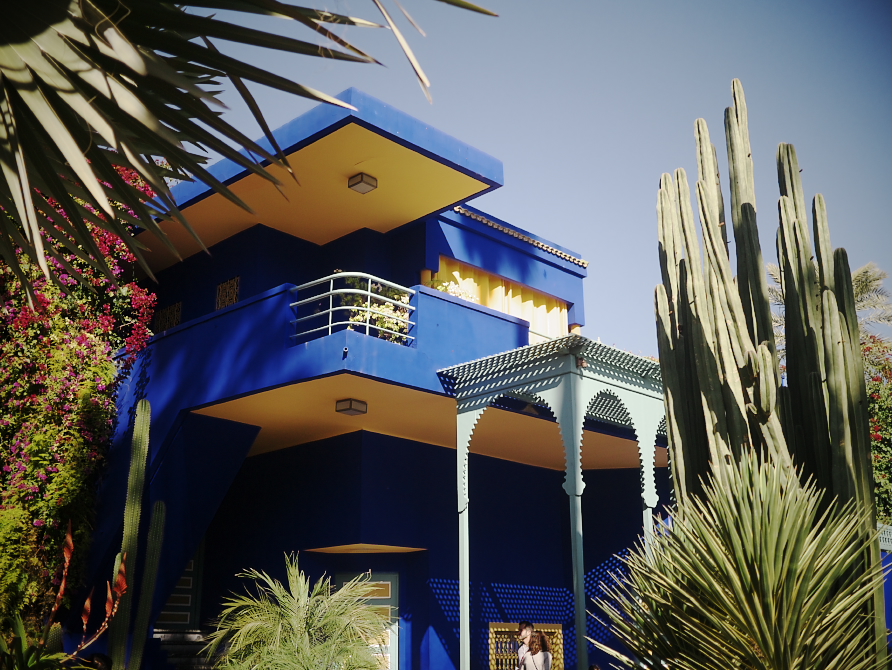
A ten-minute walk from ‘Little Africa’ is Majorelle’s house, with its stunning cactus garden and blue Art Deco building that was until recently the home of Yves St Laurent. Being an Art Deco obsessive, interested in the interplay of European and African cultures that brought about the style, I was intrigued by this character, Jacques Majorelle, who built the house in the ‘20s and ‘30s. His dad was a famous Art-Nouveau stylist, and thought his artwork remains in the shadow of his father, he did create his own colour – the shade of blue his house was painted with is trademarked as ‘Majorelle blue’. After Majorelle’s Gardens I searched for more of his work, and found beautiful 1920s travel posters for sale that depicted the multicultural movements between France and Morocco, and was led to the glamorous Hotel Mamounia. Winston Churchill, who was a fan of Majorelle’s work and often summered at the Mamounia, even during the thick of WWII (alright for some!), insisted Majorelle create a wall mural for the hotel.

Expensive by Moroccan standards, it is still worth going to Hotel Mamounia as a guest for an afternoon mint tea, which will cost you £15 for a pot, and then wandering the serene gardens usually reserved for the super rich. The peaceful surroundings, Art Deco interiors and chilled Bedouin background beats create a heavenly ambience unlike anywhere else in Marrakech. Just remember to dress for the occasion – no sandals or shorts allowed.
I ended my stay in Marrakech back with Kemal and his best friend Hassan, at his home and guesthouse Riad Tlaatawa-Sitteen. Hassan cooked the best food I had in Marrakech (“The key to a good tagine is lots of salt and pepper and the main ingredient… time”).
Hassan spent his time between Madrid, where he had a young family, and Marrakech, where he was born, and runs his Riad as a kind of laidback B&B, where residents are invited to make themselves at home, and join him in the kitchen to learn how to cook Moroccan style. For £20 per person per night you get a Riad 15 minutes from the main square, beautifully decorated in the traditional Marrakechi style, complete with a roof terrace to end your time in the city like I did; watching the sun set over the glorious red medina. [The website doesn’t seem to be working, which makes this an even bigger exclusive. E-mail Hassan at info@tlaawaw-sitteen.com and if that doesn’t work telephone +212 (0) 63599223 or, if you’re daring, just go there on the day. The address is 63 Derb El Ferrane, Riad Laarous, Marrakech]
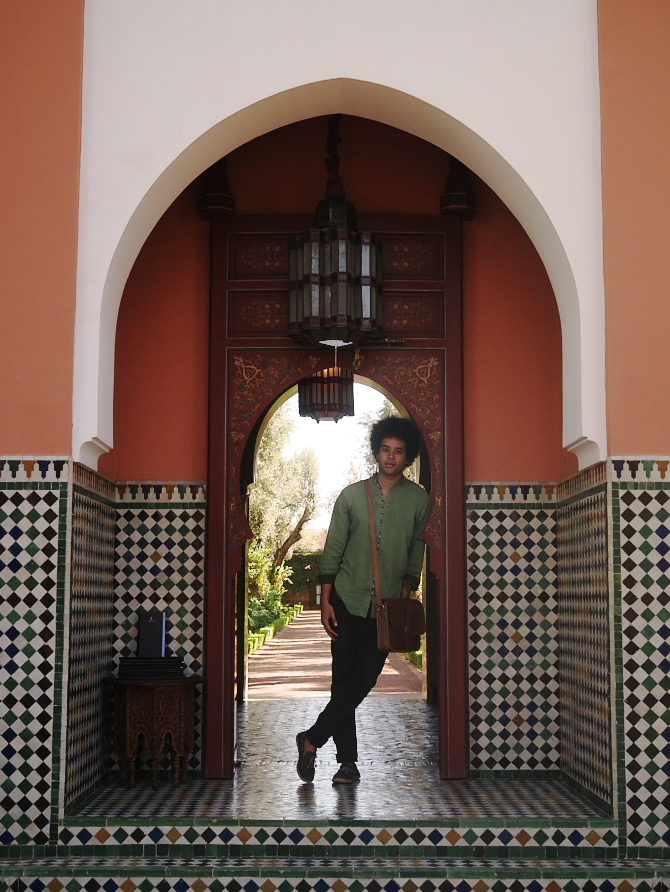
Where and What to Eat
Morocco is a land rich with spices and oils, and the food is seasoned with these riches, so even if you’re vegetarian, you’ll find tasty stuff everywhere.
Pigeon Pastilla @ Le Jardin
Yes, the sound of a pigeon pie didn’t sound great to me either, but seasoned with cinnamon and moroccan spices, then encased in a light crispy pastry it was one of the most unusual and delicious dishes I had on my trip.
Lemon Chicken Tagine @ Cafe Souk
Out of all the tagines I tried in Marrakech’s many eateries (and I ate so many I practically was a tagine by the time I came home), I’d say this was my favourite of all. The serving isn’t huge, and though not expensive there are cheaper places, but these succulent citrus flavours are second to none.
Vegetable Tagine / Mariama Special @ Chez Mariama
On night I couldn’t be bothered to head out, I’d visit this Berber restaurant, order some food and get it delivered on an ornate tray to my Riad by Mariama’s husband Abdel. The price is incredible (£3 for a tagine!?) and each time I visited Mariama she insisted on loading up the tray with more and more food for the same price.
Sfenj @ various souks
These traditional Moroccan style donuts are served on the street, and if you see one of the old men dressed in a white coat serving them, be sure to buy a batch, which are sold by weight and then threaded around a piece of leaf. As Marrakech changes, these vendors are slowly disappearing and are now fairly hard to come by, I was told.
Tagine / Chicken Pastilla / Cous Cous @ Chez Chegrouni
This restaurant is great for looking out over the Jemaa el Fna whilst dining. The food isn’t the best you’ll taste in Marrakech, but it isn’t the worst either, and considering the location the prices are very reasonable.

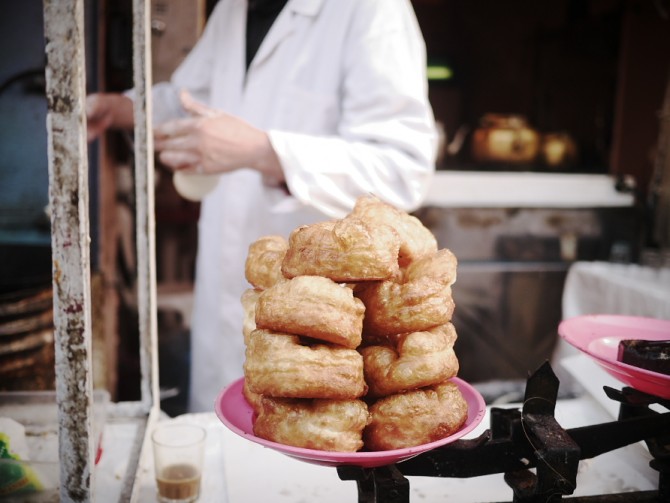
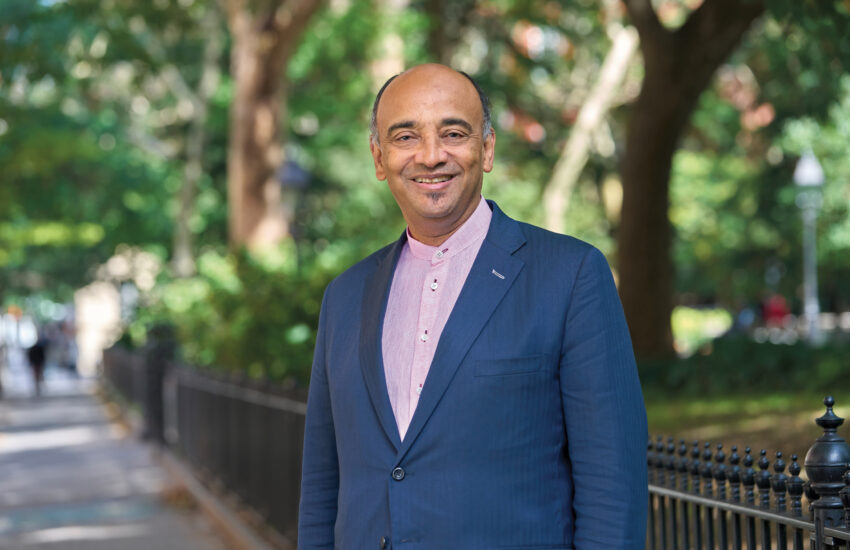
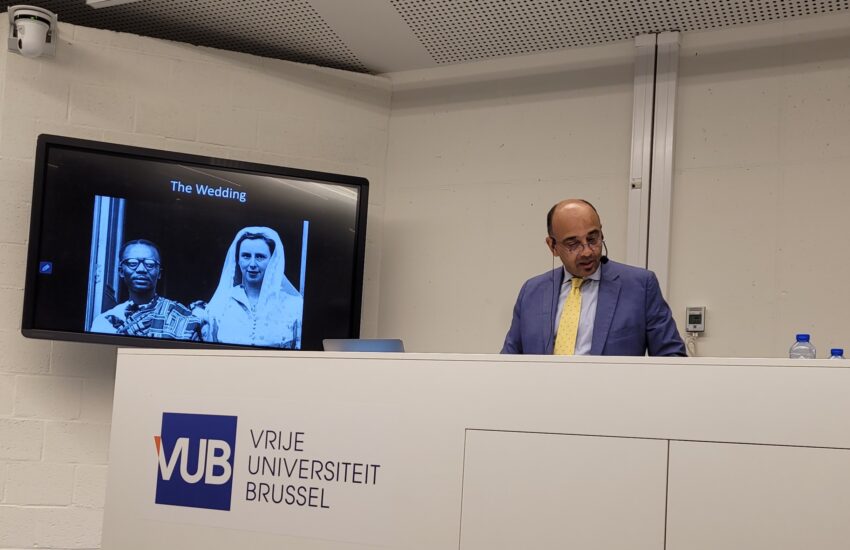
Thanks JP. A hipster’s alternative view on Marrakesh 🙂 Some of the pics brought back very recent memories.
Visiting Marrakesh inspired my last short story. You’re right. Doing Morocco Riad style can be intimidating at first (especially as a female) but it’s a great way to experience the city. When I went with mum in January we were blessed to stay in Mella, the old Jewish quarter. Lots of history and strategically close to some great cultural sites.
One of the things I find most refreshing about Morocco is how affirming it can be for a dark skinned woman of African descent, more so than women of other ethnicities, from what I observed. I’ve been twice, to different regions and it’s the same. Even when surrounded by European women, the brown girl in the ring stands out. I’ve never received so many compliments or as much approbation for having a darker skin tone as my last visit. The feminist in me should be appalled at epithets such as ‘Chocolat Frais’ or ‘Café’ but it made for such a welcome change to the subtle but prevailing Western message that I have the ‘wrong’ look. My complexion and my features were an asset not a liability.
Shalom x
thank you
I like your post thank you
good post
interesting post thank you
Interesting article and i love how you describe your trip to Marrakech, you can visit other cities and countrysides in Morocco